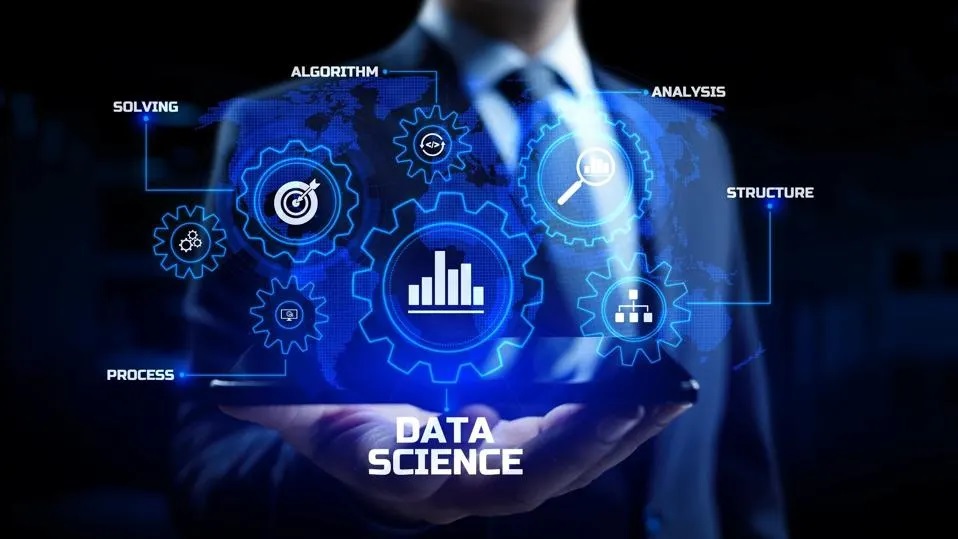In the ever-evolving landscape of technology, the role of data science has become increasingly pivotal for organizations aiming to derive meaningful insights and make informed decisions. As we step into the future, the realm of data science is poised for unprecedented growth, and understanding the nuances of data preparation, best practices, hiring strategies, and infrastructure readiness is paramount for success.
- The Importance of Data Preparation:
- Best Practices in Data Science:
- Strategic Hiring for Data Science Teams:
- Diverse Skill Set:
- Adaptability and Continuous Learning:
- Effective Communication Skills:
- Team Collaboration and Interdisciplinary Thinking:
- Cultural Fit and Ethical Considerations:
- Strategic Recruitment for Leadership Roles:
- Building a Pipeline for Emerging Talent:
- Preparing Infrastructure for the Future:
- Embracing Cloud Computing:
- Data Storage and Management:
- Real-time Processing Capabilities:
- Scalable Computing Resources:
- Integration of DevOps Practices:
- Security and Compliance:
Data preparation lays the foundation for robust data analysis and accurate model building. In the future, advancements in tools and techniques will streamline this process, allowing data scientists to spend more time on analysis and less on cleaning and formatting data. Automated data cleaning, feature engineering, and integration of diverse datasets will become key focus areas, enabling organizations to derive valuable insights from their data more efficiently.
Embracing best practices is crucial for ensuring the effectiveness of data science initiatives. Collaborative and cross-functional teamwork, continuous learning, and adherence to ethical data usage are integral components. In the future, data scientists will need to hone their communication skills to convey complex findings in a comprehensible manner to non-technical stakeholders. Additionally, the integration of interpretability and explainability into machine learning models will gain prominence for building trust and accountability.
Building a high-performing data science team is a strategic imperative. In the future, organizations should prioritize hiring individuals with a diverse skill set encompassing not only technical proficiency but also domain knowledge and business acumen. Data scientists with expertise in machine learning, statistical modeling, and data visualization will remain in high demand. Moreover, fostering a culture of continuous learning and collaboration will be essential for keeping the team at the forefront of industry developments.
The future demands data scientists with a diverse skill set that extends beyond traditional technical competencies. While expertise in machine learning, statistical modeling, and programming languages remains essential, organizations should also seek individuals with domain-specific knowledge and business acumen. This multidisciplinary approach ensures that data scientists can not only analyze data but also contextualize findings within the broader business environment.
The pace of technological advancement in data science is relentless. Strategic hiring involves selecting individuals who demonstrate a commitment to continuous learning and adaptability. Look for candidates with a track record of staying abreast of emerging trends, tools, and methodologies. This mindset of perpetual learning ensures that your data science team remains at the forefront of industry developments and can swiftly incorporate new technologies into their workflows.
In the evolving landscape of data science, effective communication is non-negotiable. Data scientists must be able to translate complex technical insights into actionable recommendations for non-technical stakeholders. Strategic hiring should prioritize candidates with strong communication skills, both written and verbal. The ability to convey findings, explain methodologies, and articulate the business implications of analyses is crucial for driving organizational decision-making.
Data science is rarely a solo endeavor. Collaboration between data scientists, data engineers, business analysts, and other stakeholders is vital for success. Strategic hiring involves seeking individuals who not only excel in their individual roles but also thrive in a collaborative environment. Look for candidates who value interdisciplinary thinking, can bridge the gap between technical and non-technical teams, and contribute to a positive team dynamic.
Beyond technical and interpersonal skills, hiring for cultural fit is essential. Data science teams should align with the organization's values and work towards shared goals. Additionally, given the increasing scrutiny on data ethics, hiring practices should include an evaluation of a candidate's commitment to ethical data use. Ensuring that data scientists understand and adhere to ethical standards is crucial for maintaining trust with stakeholders and the broader public.
Leadership within a data science team requires a unique skill set. When hiring for leadership positions, look for individuals with a proven track record of not only technical excellence but also strategic vision and the ability to drive innovation. Leaders in data science should be adept at aligning the team's objectives with the organization's overall strategy, fostering a culture of innovation, and effectively managing resources.
Recognizing that the landscape of data science is ever-changing, strategic hiring involves building a pipeline for emerging talent. Establish partnerships with educational institutions, participate in industry events, and consider internship programs to identify and nurture promising individuals entering the field. This forward-thinking approach ensures a continuous influx of fresh perspectives and skills into the data science team.
The scalability and efficiency of data science initiatives depend heavily on a well-prepared infrastructure. Cloud computing services will continue to play a pivotal role, providing the flexibility and computational power needed for handling vast amounts of data. Organizations should invest in robust data storage solutions, real-time processing capabilities, and scalable computing resources. The integration of DevOps practices into data science workflows will also become more prevalent, ensuring seamless collaboration between data scientists and IT teams.
The future of data science infrastructure is undeniably tied to cloud computing. Cloud platforms offer unparalleled scalability, allowing organizations to scale their computational resources as needed. The flexibility and cost-effectiveness of cloud solutions enable data scientists to experiment with various models and conduct analyses without being hindered by hardware limitations. As cloud services continue to mature, organizations should consider the strategic adoption of platforms like AWS, Azure, or Google Cloud to ensure they are well-positioned for future growth.
Efficient data storage and management are foundational elements of a future-ready infrastructure. Organizations must invest in robust and scalable data storage solutions to accommodate the exponential growth of data. Distributed storage systems and data lakes can provide the necessary flexibility to store and retrieve diverse data types seamlessly. Additionally, implementing data governance frameworks ensures that data is not only stored securely but is also easily accessible to those who need it.
The future of data science demands real-time insights. Organizations should focus on integrating real-time processing capabilities into their infrastructure to enable quick decision-making based on up-to-the-minute information. Streamlining data pipelines and adopting technologies like Apache Kafka or Apache Flink can help organizations process and analyze data in real-time, making them more agile and responsive to changing market conditions.
Scalability is a key factor in infrastructure preparedness. With the increasing complexity of algorithms and the growing demand for sophisticated analyses, organizations must have the ability to scale their computing resources dynamically. Cloud-based solutions offer on-demand access to computational power, enabling data scientists to tackle large-scale computations without the need for massive upfront investments in hardware.
Collaboration between data scientists and IT teams is crucial for the seamless functioning of data science workflows. The integration of DevOps practices, including continuous integration and continuous deployment (CI/CD), facilitates collaboration and accelerates the deployment of models into production. This ensures that insights generated by data scientists can be operationalized rapidly, maximizing their impact on business outcomes.
As the importance of data grows, so does the need for robust security measures. Organizations must prioritize the implementation of advanced security protocols to safeguard sensitive data. Additionally, compliance with data protection regulations is non-negotiable. Infrastructure planning should include measures to ensure compliance with regulations such as GDPR, HIPAA, or industry-specific standards.
As we look towards the future of data science, organizations must prioritize efficient data preparation, embrace best practices, strategically hire diverse and skilled teams, and invest in a robust infrastructure. By staying ahead of technological advancements and fostering a culture of innovation, businesses can harness the full potential of data science to drive success in the digital age. The journey may be challenging, but the rewards of informed decision-making and data-driven insights are boundless in the ever-evolving landscape of data science.






